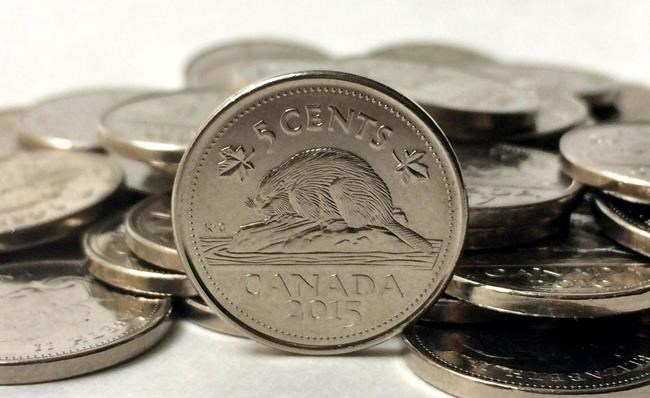CALGARY — Whether they're rattling around in your car's cup holder or have vanished permanently into the couch cushions, coins are easy to take for granted.
So when the Royal Canadian Mint announced a round of layoffs last month at its Winnipeg facility, it was a reminder that the change jingling in our pockets doesn't get there by magic. Those loonies and toonies and quarters and dimes are produced by the Mint, a Crown corporation that produces all of Canada's circulation coins out of one state-of-the-art facility in the Manitoba capital.
It's a mission the Mint believes is still vitally important, even as society's transition toward digital payments accelerates. The Mint — which also produces international coins for dozens of other countries — has said it believes its recent layoffs will be temporary, and has blamed the 56 job losses on "prolonged effects of the pandemic and ongoing geopolitical instability" disrupting global markets.
But Marie Lemay, president of the Royal Canadian Mint, acknowledged in an interview that there are also long-term pressures on the corporation and its product. Since February 2013, when the Mint stopped producing pennies due to rising costs relative to face value, overall demand for other Canadian circulation coins has been declining by about eight per cent per year, she said.
Lemay, who prefers the term "cash-lite" rather than "cashless," said that even though the Mint's Winnipeg facility still produces about one billion circulation coins annually, there's no denying the dominance of electronic transactions in today's economy.
"It’s fair to say that we are moving to a world where we're seeing increasing digital payments," said Lemay.
But she said the Mint, which still employs about 350 people at its Winnipeg production centre, has been planning for this transition. She said the corporation's goal isn't production for the sake of production, but ensuring there are always enough coins to meet demand.
"Our goal is to make sure that we are always ensuring that people that want to use coins are able to do it, when and where they want to.”
Knowing how much is enough, however, has been a challenge in recent years. During the COVID-19 pandemic, as businesses closed their physical doors and Canadians shifted their buying online, there was an immediate and dramatic impact on coin demand.
"In 2020, we saw demand drop by 37 per cent," Lemay said. "Now it's starting to come back up. But the question we still don't have the answer to, is how far up it will go."
Most data suggests physical currency won't be disappearing anytime soon. While three-quarters of Canadians agree that society will move increasingly away from cash and coins in favour of digital payments in the future, according to a recent survey conducted by the Mint, Canadians also value having access to physical money. Two-in-three Canadians surveyed reported using cash within the last month.
Irwin Lipnowski, associate professor of economics with the University of Manitoba, said he thinks there will always be some level of demand for currency.
“I don’t think there will ever be a case of people just using cards," Lipnowski said.
"A lot of people like the idea that they’re paying cash, and they’re using this currency and have a way of ensuring it’s not counterfeit.”
Low-income Canadians as well as those living in rural and Indigenous communities are more likely to use physical money than urban Canadians, Lemay said — which is where the Mint's role as not just a producer of coins, but as manager of the country's coin supply, comes in.
Unlike the mints of most other countries, the Royal Canadian Mint is also tasked with managing the national coin inventory and ensuring coins get to where they need to go, Lemay said. The corporation works with armored car carriers and financial institutions to understand both present and future demand.
"We have a view into where coins are around the country, and we’re able to forecast. We’re able to move coins around ... and that allows us to have very efficient coin production," Lemay said.
This end-to-end oversight of the national inventory has helped ward off some of the problems other countries have encountered with their coin supplies during the pandemic, she added.
The U.S., for example, has dealt with repeated coin "shortages," the result of coins getting "stuck" in the system and failing to circulate through the economy during periods of business closures and increased online payments.
Lemay said as the overall demand for coins inevitably declines, getting coins into the hands of people who still want to use them — especially in remote and rural regions with limited banking access and inconsistent internet connectivity — will become even more important.
She added recent events, such as last summer's Rogers outage that took down the Interac payment network, have proved the value of a reliable physical currency. She said the Royal Canadian Mint is equipped to scale up very quickly, if a natural disaster or some other unforeseen event led to a dramatic increase in demand for cash.
“I think coins and digital payments will coexist for the foreseeable future, so we have to find a way that it’s done seamlessly," Lemay said.
"Should we, for whatever reason, need to produce more coins, we have capacity to do it."
This report by The Canadian Press was first published March 10, 2023.
Amanda Stephenson, The Canadian Press



